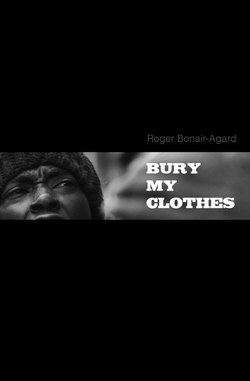Читать книгу Bury My Clothes - Roger Bonair-Agard - Страница 5
ОглавлениеPreface
Bury My Clothes is a meditation on violence. It is a meditation on race. It is a meditation on the places at which they intersect, politically, culturally, and personally. This collection of poems seeks to explore the history of violence in the development of Trinidad and Tobago’s steelpan culture in parallel to the history of violence in the development of America’s hip-hop culture. In both thought and poem I went down the “rabbit hole” and what the poems discovered was a fundamental difference in the reasons for the creation of art in the world. Among oppressed communities of color, it is about survival. It is about establishing personhood in the world, where everything around suggests nonpersonhood. And as such, it establishes legacy in a culture and history of nonownership, through the ownership of idea and ideal. The individual’s currency of personhood is only the art, and as such it must be marked as his/hers. The calypso, the new instrument, the new riff, the break beat, the graf tag must be recognized as that person’s. It isn’t to be handed down or memorialized in monuments. In protection of this ownership, we’ve made music in secret, drawn guns in beef about who stole whose rap flow. We’ve pulled cutlasses on other crews and stolen a prized tenor pan in the middle of the night. We’ve died with the secrets of wire bending and we’ve soaked records to remove the label, to make the break unreadable. All this while moving, changing, reinventing, and disrupting the overall cultural and artistic landscapes. Indeed, we’ve made ours ours, in personal style too, a tilt of hat here, an extra pleat there, a shirt open down to a navel, a massive medallion in leather or gold.
At the root of this violence is a violence done to us, and that continues to be done to us. And where this violence is real to us, where the ways in which our ability to move and live are under constant siege, so the ways in which we rebel must be constantly shifting. The art is always “next.” It is always new. It is always “fresh.” At the heart of this is a violence we perpetrate: against ourselves, against others, in retaliation. And at the outer reaches are the myriad personal violences of the heart, of the personal, in the quest to be eventually most fully human.
The all-time great calypsonian Growling Tiger sang, “When ah dead, bury meh clothes / ah doh want no sweet man to wear meh clothes.” He wanted what made him new and fresh and a man whose personhood was established to go with him when he died. It was all he owned, all he would ever own. The refrain is a favorite rhythm in the gayelle, for the traditional stick-fights that are part of the slave rebellion history in Trinidad and Tobago. It is a song of lament and conjure. It undulates the shoulders and drives the feet into the dirt. It lifts the body up and cracks the stick. It draws the blood. It buries the man, a man, a hero on his own terms.
The poems, hopefully, do that plus offer a prayer, a signpost for a new, more total way to exist, even as they acknowledge “I am a black poet / plain and simple. I don’t know if I was black before I was a poet / but I come from a people who have ways / of telling such things.” The poems are about gathering again, from wherever they might come, all those people.
